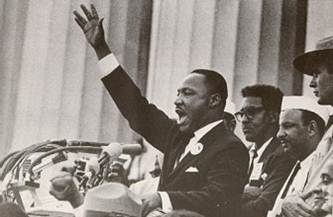 Todd Cherches | Comments Off |
Todd Cherches | Comments Off |  Cardiologist,
Cardiologist,  Communication,
Communication,  Data,
Data,  Heart,
Heart,  Metaphors,
Metaphors,  Presentation,
Presentation,  leadership
leadership  Thursday, June 8, 2017 at 3:21PM
Thursday, June 8, 2017 at 3:21PM After going through a series of routine heart exams the other day (EKG, Echocardiogram, cholesterol check, etc.), the cardiologist comes in and says:
“Based on all your lab results, and calculating all your risk factors, you have about a 5% chance of having a heart attack within the next ten years.”
Getting weak in the knees, heart pounding through my chest, and feeling like I am about to pass out from the shock of this death sentence, I pause long enough to say:
“Wait. Doesn’t that mean that there’s more than a 95% chance that I WON’T have a heart attack within the next ten years???”
To which he replies: “Yes…I guess that’s another way of looking at it.”
Um...yeah.
In fact, he goes on to say that my results are excellent and that my heart is in perfect shape. As it turns out, statistically, 5% is the odds of ANY 50-plus-year-old male having a heart attack within the next ten years! So, despite the temporary panic he caused, it turns out that I am completely normal…heart-wise, anyway.
So what can we take from this near-fatal incident in terms of communicating numbers?
Everything!
Businesspeople communicate in numbers almost every single day. Regardless of what function you work in, numbers are, typically, how we gauge -- and explain to others -- how we’re doing. And it's how most managers manage.
As management guru Peter Drucker famously put it, “It you can’t measure it, you can’t manage it.”
But a crucially important point to keep in mind – whether delivering a presentation, or writing a report, and whether communicating to your boss, employees, or customers – is that it’s not the numbers themselves that matter; it’s the story the numbers tell…and the message you intend to deliver.
Numbers without context are absolutely meaningless and confusing...and, worst case, potentially damaging.
A few examples:
So, again, it's not the NUMBERS that matter, but the story, and the meaning, and the humanity, and the emotion behind those numbers. That’s what moves people and spurs them to action.
And when communicating numbers (whether spoken or written), keep in mind that it’s not just WHAT we say (the facts and figures), but HOW we say it (tone of voice, body language, facial expression, framing).
So, going forward, when communicating numbers, I urge you to consider your listeners or readers, by putting yourself in their shoes and using empathy and emotional intelligence to visualize and anticipate how your message may, ultimately, be received.
Otherwise, failure to do so can, literally, give someone a heart attack.
 Todd Cherches | Comments Off |
Todd Cherches | Comments Off |  Cardiologist,
Cardiologist,  Communication,
Communication,  Data,
Data,  Heart,
Heart,  Metaphors,
Metaphors,  Presentation,
Presentation,  leadership
leadership  Monday, January 16, 2012 at 4:00PM
Monday, January 16, 2012 at 4:00PM 
Among the many amazing features of Dr. King’s numerous classic speeches – including, of course, his iconic, “I Have a Dream” speech – was his use of “visual communication”… his talent and ability to paint pictures with words.
While Dr. King drew on a variety of rhetorical techniques to “Educate, Engage, & Excite” TM his audiences – e.g., alliteration, repetition, rhythm, allusion, and more – his ability to capture hearts and minds through the creative use of relevant, impactful, and emotionally moving metaphors was second to none.
What do metaphors do? They make the abstract concrete; the intangible tangible; the unfamiliar familiar, and the complex simple. By joining together in an innovative and powerful way the seemingly unconnected, effective metaphors imbed powerful and memorable images in our minds, while at the same time forging a powerful and memorable connection between speaker and listener.
With that thought in mind, I’ll leave with you this powerful and moving list of metaphors and images that Dr. King left with us:
 Todd Cherches | Comments Off |
Todd Cherches | Comments Off |  Communication,
Communication,  Dream,
Dream,  MLK,
MLK,  Martin Luther King,
Martin Luther King,  Metaphor,
Metaphor,  Presentation,
Presentation,  Speeches,
Speeches,  Visual,
Visual,  vizthink
vizthink